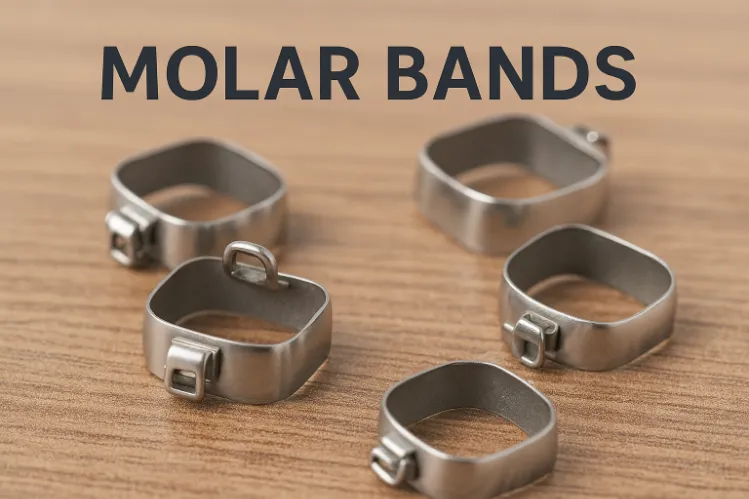
We all have seen those commercial videos about aligners that are almost invisible. They make it almost seem like getting straight teeth is as simple as returning from the dentist without braces. However, before diving into the clear aligner hype, it is first important to understand the things that clear aligners can do and what they cannot.
While clear aligners are helpful, they are not a magic spell. They’ve proved to be good for so many things, but for some dental issues, it is not advisable to use them. Let us get down straight into the discussion of what clear aligners are capable of, their types, which problems they address, and which they do not.

If our teeth are a little crooked or we have gaps, aligners can help a lot. These aligners work by gradually moving our teeth as time passes. And the best part? They’re transparent, so most people won’t even realize that you’re wearing clear aligners.
Crowded teeth are one of the issues that aligners correct. If you have some teeth that are overlapping each other, aligners can separate and straighten them. It gives a better look, and as a plus, it's easier to brush our teeth more efficiently, something that helps in preventing cavities and gum diseases.
Spacing problems are also solvable with aligners. If we have spaces in between the teeth, aligners will make those spaces disappear and give us a set of aligned teeth. Whether the gaps are small, just a little larger than that, or somewhere in between, aligners gradually move everything back into place.
Read more on: Things You Need To Know Before You Choose Clear Aligners.
Clear aligners can also treat certain forms of bite issues, but they are limited to mild ones. If we have a small overbite, that is, if our upper teeth are protruding over the lower teeth, or a minor underbite, with our lower teeth in front of the ‘upper,’ then it may be possible to use aligners. These shape the teeth so that we have an improved bite; however, this does not work if the bite issue is drastic.
While clear aligners are amazing, there are a few things they can’t fix, such as a really bad overbite or underbite. In those cases, it is best to go for braces or even surgery to fix our bite to where it needs to be. Clear aligners are not forceful, and they cannot move teeth in the way that braces can when a major shift has to be done.
Clear aligners also cannot treat teeth that require a lot of rotation. In severe cases, when a tooth is rotated or twisted, aligners cannot move it to the correct position. While brushing, those teeth may remain quite a challenge to this process, but braces can easily get a hold of such teeth and align them correctly.
Unlike braces, clear aligners cannot address any issues related to the jaw or bones. Jaw problems generally require more attention than teeth; they may require the installation of braces or even surgery. One has to bear in mind regarding the use of aligners – they shift teeth rather than bones.
Now that we know what aligners can and can’t do, the big question is: how can we tell if such dental tools are right for us? Fortunately, this information can be obtained by merely visiting a dentist or orthodontist. They will examine our teeth and inform us whether clear aligners are suitable or whether we require some other treatment, such as braces or clear aligners.
If we are talking about moderate problems such as twisted teeth, gaps, or, a minor misalignment of the bite, then aligners are ideal. But if we have greater issues, like a jaw problem or a very poor bite, then we need a stronger solution. It’s really all about pinpointing the best treatment for us.

During our visit to the orthodontist, we can simply ask them whether clear aligners are suitable for us or not. Some good questions to ask can include:
By asking these questions, you can have a better idea of what to expect and how clear aligners can work for you.
Read more on Best Clear Braces in 2025: What You Need to Know.

Aligners work by applying slight pressure to our teeth to guide them back into their proper position. Moreover, these trays are changed every other week, and each tray is slightly different. The process is similar to taking baby steps, as they form a kind of strategy that, in the long run, makes a significant impact.
Moreover, people wear their aligners for a typical range of 20 to 22 hours per day. This means that clear aligners have to be worn throughout the day, excluding when we are eating or brushing our teeth. The more we use them, the better the result will be. If we remove them too often, it may slow down the process by quite a margin, so there’s no getting out of it. It is also important to follow the suggestions given to us by the orthodontist or dentist.
Clear aligner trays are changed every week because each tray will slide our teeth a little bit as they apply a light force on the teeth so that they can be shifted in the desired position. When we switch to another tray, it continues to move the teeth. Finally, when all our trays are complete, our teeth get aligned in the chosen alignment. That’s why it’s super important not to skip trays or wear them for less time than we’re supposed to.
Aligners are virtually invisible, so you can go unnoticed by friends, family, and even co-workers when wearing them. This makes it comforting to straighten your teeth without having to stress every time you look in the mirror.
Another great thing about aligners is that they are removable. On the other hand, braces cannot be removed, which can lead to some lifestyle restrictions and limitations. However, with aligners, we can simply take them out anytime we wish to eat a meal or chew on something, and then we can take whichever food we fancy. Of course, after the meal is over, all you need to do is rinse your mouth, brush your teeth, and place the aligners back. This also makes it easier to clean our teeth compared to braces, which take up a lot of space in the teeth and make it hard to brush.
In addition, aligners don’t cause as much discomfort as braces. Braces are painful because they use metal wires and brackets that may cause initial discomfort. With aligners, we don’t have to worry about sharp edges or wires as seen in metallic braces. The trays are not rough or oddly shaped, as they are made of plastic combined with a smooth fitting to ensure they fit perfectly over our teeth. Of course, we might still feel some pressure when the trays are moving our teeth, but it’s more comfortable and convenient when compared to braces.
When it comes to clear aligners, they do have some limitations; for instance, they cannot adjust complex bites or teeth that have to be severely rotated. But there are other things that we have to bear in mind. First, aligners only work if we wear them regularly. Also, if we do not use them for 20 to 22 hours a day, they may not be quite as effective, and it may take a while longer to get the results that we are seeking.
The last thing that we need to consider is that aligners do not always work faster than braces. Sometimes, they can deal with a case as effectively as normal braces, but at other times, they can take longer.
Also, clear aligners can sometimes be more costly than braces, especially if we get them from a specific provider. Although some people are ready to spend more money on the comfort and discreet appearance offered by clear aligners, others may think twice before considering the treatment primarily due to the cost. We also have to be careful with our aligners since they are detachable, and it is easy to misplace or even drop them if one is not careful.
Clear aligners are a great option for people who want to have straight teeth. They are capable of treating mild to moderate dental issues such as teeth spacing, crowding, minor rotation, and slight dental misalignment. Moreover, they are almost discreet and easy to take off when required. However, they are ineffective for complex cases as they cannot correct severe dental problems, bite issues, or significant rotations of teeth.




Curated the best for your knowledge
.webp) Gingivitis Treatment: How to Reverse Early Gum Disease
Gingivitis Treatment: How to Reverse Early Gum DiseaseGingivitis tends to creep up quietly, usually after a stretch of rushed brushing or nights where flossing just slips your mind. The first sign is often bleeding when you spit toothpaste into the sink. That moment makes people Google how to cure gingivitis, which is honestly the right instinct. Early gum inflammation happens because plaque irritates the tissue around the teeth. If you respond quickly, it is fully reversible. Most cases improve quickly with proper cleaning, hydration and small tweaks in daily habits. The key is not ignoring those early red or puffy gum signals.
Read More.png) Metallic Taste in Mouth: Causes and How to Get Rid of It
Metallic Taste in Mouth: Causes and How to Get Rid of ItHaving metal taste in the mouth first thing in the morning can be an unexpected experience. You wake up, take a swallow, and suddenly have a metallic taste in your mouth, as if you'd been chewing on a handful of change. It's annoying, a little scary, and sometimes for no apparent reason. For some people, it will be nothing but a minor nuisance; others may fall into the late-night goose chaser. Sometimes it's a sign that there is something wrong with your braces; other times, it could mean that there is something wrong with one of your teeth. But here's the good news: Most metallic tastes are temporary, harmless, and can be treated or resolved. So let's take a closer look at the possibilities.
Read More How Molar Bands Work in Braces and Retainers to Keep Your Teeth in Line
How Molar Bands Work in Braces and Retainers to Keep Your Teeth in LineIf you’ve ever started orthodontic treatment, you already know there are a lot of tiny pieces involved. Wires, brackets, elastics, retainers, attachments… and then there are molar bands. They’re not as famous as braces themselves, but they play a surprisingly big role in keeping your smile moving in the right direction. Some people don’t really notice them. While others desperately want to know why that metal ring is even there. So let’s break it all down: what molar bands are, why orthodontists use them, and how they work in both braces and retainers. Plus, what you should expect throughout the process.
Read MoreQuick Links

Heading